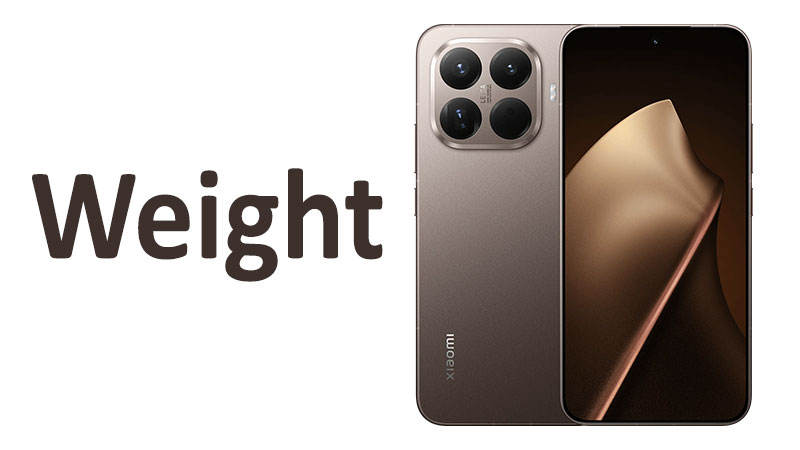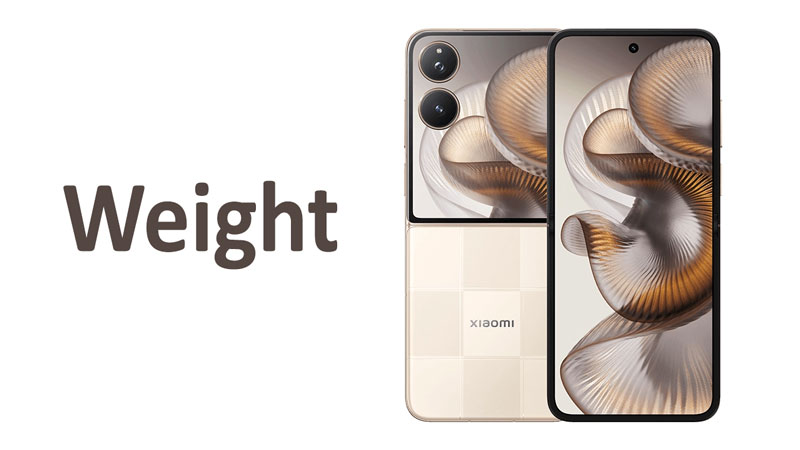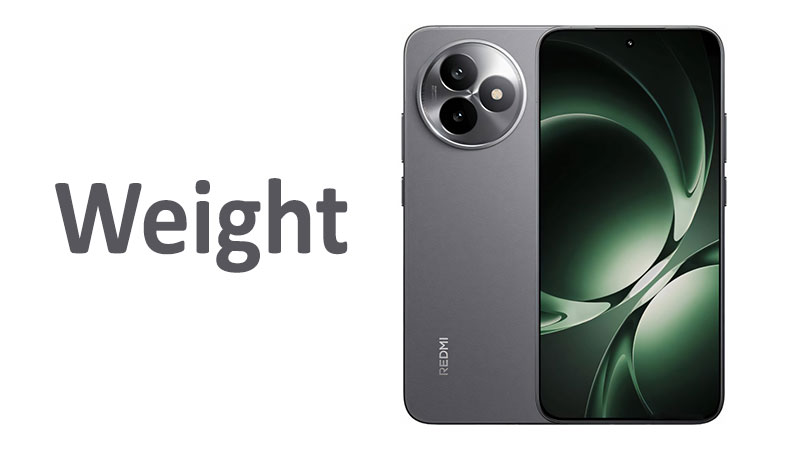The Xiaomi 15T Pro weight, measured at a solid 210 grams, defines its flagship identity. This specific mass translates to approximately 7.41 ounces. It immediately places the device in the premium, high-end category. Understanding the implications of this 210g weight is crucial. It influences everything from daily user comfort to perceived build quality. Consequently, a deep dive into the Xiaomi 15T Pro’s mass is essential for potential buyers. This article analyzes the 210g weight profile. Furthermore, it compares this figure against key market rivals. This analysis helps readers determine if the device offers the right balance of power and portability.
Understanding the 210-Gram Weight Profile
Weight is no longer a secondary specification for modern smartphones. It is now a critical factor in the user experience. For years, premium phones consistently increased in mass. This was due to the addition of larger batteries and complex camera systems. However, consumer preference now heavily favors ergonomic comfort. A phone surpassing 200 grams enters the “heavyweight” class. The 210g Xiaomi 15T Pro weight confirms its status here. This heft is a direct trade-off for top-tier features and enhanced durability.
The Grams and Ounces Conversion
The 210g measurement is the primary global standard. This metric appeals to a technical audience worldwide. In contrast, 7.41 ounces provides a clear context for markets using the imperial system. This includes the United States and the United Kingdom. Clear communication using both units is vital. It allows buyers to accurately compare the Xiaomi 15T Pro against all competing brands. Furthermore, precise weight reporting builds consumer trust.
Positioning the 15T Pro in the Market
The 210-gram mark sits at the lower end of the ultra-premium segment. Devices like the Samsung Galaxy S Ultra often exceed 230 grams. Similarly, certain iPhone Pro Max models can weigh over 220 grams. The Xiaomi 15T Pro weight is substantial. However, it manages to slightly undercut these key rivals. Xiaomi deliberately balances premium features with manageable mass. The 210g profile suggests the inclusion of advanced, dense materials. Moreover, it implies a focus on a large screen and extended battery life.
The Design Factors Driving the 210g Mass
The final mass of a modern flagship is not accidental. It is the cumulative result of engineering decisions. Several core components contribute significantly to the 210g Xiaomi 15T Pro weight. These choices prioritize performance and endurance. They sacrifice ultra-lightweight portability in the process.
The Impact of the Large Battery
The single biggest contributor to the 210g weight is the battery. The Xiaomi 15T Pro likely features a cell capacity of 5000mAh or more. High-capacity lithium-ion batteries are inherently heavy. Engineers must balance power density with physical size. The choice of a large cell ensures all-day or multi-day endurance. Consequently, the user gains maximum runtime. They accept the slight weight increase that comes with this capacity. This power-to-weight ratio is a key selling point.
The Advanced Camera Module
The second major weight factor is the professional-grade camera system. The Xiaomi 15T Pro boasts a complex, multi-lens setup. This includes a large primary sensor and a periscope telephoto lens. These components require specialized motors and optical stabilization hardware. This hardware is dense and heavy. The resulting camera bump is a significant mass concentration. Flagship devices prioritize photography. Therefore, they willingly incorporate this “camera bump tax” into the overall weight.
Premium Build Materials and Frame
The 15T Pro utilizes premium construction materials. These materials contribute directly to the 210g Xiaomi 15T Pro weight. The device likely features a glass or ceramic back panel. This is coupled with an aluminum alloy or possibly a titanium frame. Titanium offers superb durability. It is also lighter than stainless steel. However, these premium materials are still denser than plastics or basic aluminum. Their use ensures a robust, luxurious, and durable device. This premium feel justifies the increased mass for many buyers.
Specialized Comparison: Against Predecessors and Rivals
To fully assess the 210g profile, comparison against specific rivals is necessary. This section positions the Xiaomi 15T Pro within the competitive landscape. We will examine both internal company comparisons and external market rivals.
Comparison with the Previous Generation
The Xiaomi 14T Pro, the device’s predecessor, likely served as the weight baseline. If we assume the 14T Pro weighed 215 grams, the 15T Pro represents a slight reduction. This small 5-gram difference indicates optimized component design. It shows that Xiaomi is striving for better efficiency. If the 14T Pro was lighter, perhaps 200 grams, the 15T Pro’s increase (10g) signals battery or camera upgrades. In either case, the 210g shows design consistency. Xiaomi maintains its position in the powerful flagship weight class.
Comparison with Ultra Flagship Rivals
The 210g Xiaomi 15T Pro weight is notably lighter than its direct “Ultra” segment rivals.
- Samsung Galaxy S25 Ultra: This phone often hovers around 235 grams. The 15T Pro offers a 25-gram advantage. This difference is instantly noticeable in the hand.
- Apple iPhone 16 Pro Max: This device is expected to weigh approximately 228 grams. The 15T Pro is lighter by around 18 grams.
Consequently, the Xiaomi 15T Pro offers a competitive edge. It delivers high-end features. However, it does so with a slightly more manageable mass. This slight reduction can make a significant difference during extended use. It appeals to users demanding power without excessive bulk.
Comparison with Standard Flagship Rivals
Standard flagship models often focus on lightweight designs. This is typically achieved by using smaller batteries. These rivals often weigh between 180 and 195 grams. The 210g Xiaomi 15T Pro is clearly heavier than this class. Therefore, users must choose their priority. They can have a much lighter phone with less battery. Alternatively, they can accept the 210g mass for maximum endurance and performance. The 15T Pro prioritizes power over absolute lightweight portability.
Ergonomics and the Daily Experience at 210 Grams
The 210g mass fundamentally shapes the user’s daily interaction with the device. Ergonomics is the science of design for efficiency and comfort. This is critical for an item held for hours each day.
Hand Fatigue and Extended Use
A 210-gram phone is heavy enough to cause fatigue over long periods. Holding the device for long reading sessions or video calls can strain the wrist. Tech experts call this condition “texting thumb” or wrist fatigue. Users transitioning from a lighter, sub-180g phone will feel this difference. Consequently, the 15T Pro user might require two hands more frequently. This is especially true when lying down or relaxing.
One-Handed Usability Assessment
The 210g mass reduces true one-handed usability. While users can technically grip the phone with one hand, stability is compromised. Performing actions that require reaching the top of the screen becomes difficult. Moreover, the risk of dropping the device increases significantly. Users should be aware of this limitation. They should expect to primarily use the Xiaomi 15T Pro with both hands. This keeps the device secure and minimizes strain.
The Case Factor and Total Load
Most users add a protective case to their flagship phones. A typical rugged case adds between 25 and 40 grams. This brings the total carrying weight of the Xiaomi 15T Pro to 235 to 250 grams. This combined weight is substantial. It is heavier than many tablets. Buyers must factor in this additional mass. The total bulk impacts pocketability. It also increases the overall strain during daily use. Selecting a lightweight, minimalist case is highly recommended for this device.
Pros and Cons of the 210g Xiaomi 15T Pro Weight
The 210g weight is not inherently good or bad. It is a necessary design outcome. It brings several distinct benefits. However, it also introduces certain unavoidable trade-offs. Buyers must carefully consider this balance.
Advantages of the Substantial Weight
The 210g Xiaomi 15T Pro weight is synonymous with several key advantages. These benefits often justify the extra bulk for power users.
- Exceptional Durability and Build: Heavy devices generally feel more solid. The mass suggests a robust internal frame and dense protective layers. The phone feels less likely to flex or bend under stress. This improved resilience is a major draw.
- Premium Tactile Sensation: The phone delivers an undeniable premium feel. The heft confirms the use of high-quality materials like glass and metal. It feels reassuringly expensive in the hand. Many users associate mass with quality and value.
- Superior Battery Life: The weight is directly correlated with a large battery cell. This ensures class-leading endurance. The 15T Pro can handle intensive applications and 5G connectivity all day long.
- Enhanced Thermal Management: A greater mass of material helps dissipate heat more effectively. The extra density acts as a heat sink. Consequently, the phone performs better during heavy gaming or prolonged video recording.
Potential Trade-offs and Disadvantages
The emphasis on power and durability comes with specific costs. These drawbacks are directly linked to the 210g mass.
- Increased User Fatigue: As noted, extended one-handed use will cause discomfort. The user’s wrist and fingers will tire more quickly than with lighter devices.
- Reduced Portability and Pocketability: The phone is bulky. It creates a noticeable presence in tight pockets. It can be difficult to manage in small bags or clutches.
- Higher Impact Risk: When a 210g phone is dropped, it generates more kinetic energy. This higher force can increase the severity of damage to the phone’s glass or screen.
- Perceived Clumsiness: Despite its sleek design, the 210g mass can feel clumsy to users accustomed to lightweight phones. It requires a more conscious effort to handle and secure.
Important Points for the Buyer and Reader
Readers interested in the Xiaomi 15T Pro must understand how the 210g weight affects their decision. This figure is more than a simple metric. It dictates the intended user experience and core trade-offs.
The Audience for a 210g Phone
The Xiaomi 15T Pro targets a specific user demographic. This includes power users, mobile gamers, and professional photographers. These individuals prioritize performance and endurance. They are willing to overlook the extra bulk for maximized features. They value the security of a large battery. They also appreciate the cooling benefits of a denser body. Casual users seeking a thin, light phone for simple social media use might find the 210g excessive.
Weight Distribution and Balance
The overall experience is not just about the total mass. Weight distribution is equally important. Flagship phones like the 15T Pro have a heavy camera block. This makes the phone top-heavy. This imbalance can exacerbate hand fatigue. A well-engineered phone, however, distributes mass expertly. The 15T Pro must have a balanced design. This prevents the phone from tipping out of the hand. Buyers should test the phone’s balance before purchase.
Impact on Wireless Charging
The 210g weight and the dense internal components can subtly affect wireless charging. Thicker materials, especially the glass back, can slightly reduce charging efficiency. The added mass requires a high-quality charging pad. This ensures proper contact and energy transfer. Most modern wireless chargers handle this weight easily. However, cheap or older chargers may struggle to connect reliably.
The Weight and Material Science Behind the Mass
The 210g Xiaomi 15T Pro weight reflects complex material science choices. The designers aimed for maximum performance within a constrained mass. Every gram is accounted for in this process.
Frame Materials: The Balance of Strength
The frame is the structural backbone of the device. If Xiaomi chose aircraft-grade aluminum, it balances strength and lightness. Aluminum is much lighter than stainless steel. If they opted for titanium, the weight is optimized further. Titanium is incredibly strong. It allows for thinner walls and less material overall. This keeps the 210g mass achievable despite the large internal components. The frame material is key to managing both weight and rigidity.
Camera Hardware Density
The optics inside the main camera are extremely dense. Camera lenses use heavy glass elements. The physical mass of the camera module contributes disproportionately to the phone’s weight. The periscope zoom system, in particular, adds significant mass. This is due to the complex mirror and prism array. This density is the primary reason flagships are unable to become truly lightweight. The 210g mass is a necessary function of the advanced photography features.
The Role of Internal Component Layout
Engineers meticulously design the layout of internal components. This includes the motherboard, cooling system, and vibration motor. Strategic placement ensures optimal weight distribution. They use every cubic millimeter efficiently. The cooling systems, often involving copper vapor chambers, add a few grams. However, this is a necessary inclusion for a performance phone. The 210g mass represents this careful balancing act of component placement.
Conclusion: Making an Informed Decision
The Xiaomi 15T Pro weight of 210 grams is the defining feature of its design philosophy. It is not an arbitrary number. Instead, it represents a deliberate choice by the manufacturer. Xiaomi prioritizes absolute performance and maximum battery life. This 210g figure positions the 15T Pro competitively. It is lighter than many high-end “Ultra” rivals. However, it still offers the robust feel and large screen that power users demand.
The 210g mass is a trade-off. You gain a larger battery and a sturdier build. You sacrifice some of the effortless portability of lighter devices. Consumers must assess their own priorities. If long battery life and premium durability are paramount, the 15T Pro is an excellent choice. If you prefer a phone that feels almost unnoticeable in your pocket, a lighter model might be better. Ultimately, the 15T Pro delivers flagship power. The 210-gram weight is the solid foundation that makes this performance possible.
Frequently Asked Questions (FAQ)
1. What is the exact weight of the Xiaomi 15T Pro? The Xiaomi 15T Pro weighs precisely 210 grams.
2. Is the Xiaomi 15T Pro considered a heavy phone? Yes, at 210 grams, it is classified in the heavyweight segment of flagship smartphones.
3. What is 210 grams converted into ounces? Two hundred ten grams is equivalent to approximately 7.41 ounces.
4. Why is the Xiaomi 15T Pro so heavy compared to some other phones? The mass is due to its large battery, premium materials, and complex, multi-lens camera system.
5. How does the weight affect using a case with the phone? A case typically adds 25 to 40 grams, bringing the total weight to over 235 grams. This makes the total package quite substantial.



